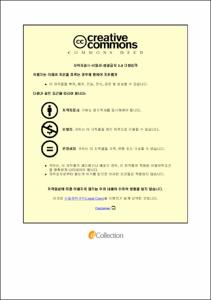생물경제모델을 이용한 참조기 어업관리수단의 효과 분석
- Abstract
- Yellow croaker has been designated as a target species of fisheries resource management in the South Korea since 2007. National Institute of Fisheries Science has announced the fisheries management measures for resource recovery as the recommendation in 2015.
Lately, pre-assessment of the fisheries management measures using the bioeconomic model is importantly considered in the world. Pre-evaluation of the recommendation is necessary to lead to success of the fish stock rebuilding plan and to improve the effectiveness of fisheries management measures on the Yellow croaker.
For stock assessment of the Yellow croaker, data used in the analysis are catch of Yellow croaker and fishing efforts of the Gill net, the Stow net, and the Pair trawl which account for most of Yellow croaker catch in Korea(1990∼2013). The fishing efforts are total horsepower and tonnage of active vessel belonging to each fishery.
To develop a bioeconomic model on this species, surplus production models were used which are needed catch and fishing effort data for analysis. As there is no data to replace the fisheries catch statistics on catch data and it has difficulty in understanding the relationship between catch and effort, it is hard to conclude which data is the best for the stock assessment. For this reason, amount of resources and biological variables were estimated by using the six kinds of fishing efforts(number of vessels, hp, tons of vessels, hp / tons of vessels, hp / number of vessels, tons of vessels / number of vessels) and five kinds of surplus production models(Shaefer, Schnute, W&H, FOX, CYP). 30 kinds of regression analysis were conducted and the results were compared. Finally, the number of vessels was used as a fishing effort and CYP model was selected.
The coefficients of the regression equation of CYP model can be utilized for estimating the amount of resources, MSY and biological variables. These are essential factors for developing the bioeconomic model.
The bioeconomic model was used to analyze resource management effectiveness and economic impact of the recommendations being presented as measures to rebuild Yellow croaker resources. The contents of recommendations are as follows; minimum legal length and the adjustment of fishing prohibition period, selecting Yellow croaker as TAC management species, reduction of fishing efforts of gill nets and management of the fisheries environment.
The results of this study were as follows. First, the reduction of fishing efforts of gill net fishery is the most efficient method in the recommendation. Second, if the minimum legal length and the adjustment of fishing prohibition period are conducted with the reduction of fishing efforts of gill nets, the amount of catch and revenue of the Yellow croaker would be slightly reduced. However, it would be helpful to increase the amount of resources. Third, TAC 30,000 tons or 28,000 tons of the Yellow croaker are expected to have very high risk of resource depletion. Fourth, current recommendations are unlikely to achieve the target catch and the amount of resources.
- Issued Date
- 2016
- Awarded Date
- 2016. 2
- Type
- Dissertation
- Publisher
- 부경대학교 해양수산경영학과 대학원
- Affiliation
- 부경대학교 해양수산경영학과
- Department
- 대학원 해양수산경영학과
- Advisor
- 김도훈
- Table Of Contents
- 목 차
Ⅰ. 서 론 1
1. 연구 배경 및 목적 1
2. 선행연구 5
Ⅱ. 참조기 어업현황 9
1. 생산 동향 9
2. 주요 어업들의 어업노력량 및 CPUE 변화 11
Ⅲ. 분석 방법 및 자료 14
1. 분석 방법 14
2. 분석 자료 23
Ⅳ. 분석 결과 28
1. 참조기 자원동태모델 분석 결과 28
2. 권고안별 분석 결과 30
Ⅴ. 요약 및 결론 69
1. 요약 69
2. 결론 및 한계점 71
참고문헌 74
- Degree
- Master
- Files in This Item:
-
-
Download
 생물경제모델을 이용한 참조기 어업관리수단의 효과 분석.pdf
기타 데이터 / 1.85 MB / Adobe PDF
생물경제모델을 이용한 참조기 어업관리수단의 효과 분석.pdf
기타 데이터 / 1.85 MB / Adobe PDF
-
Items in Repository are protected by copyright, with all rights reserved, unless otherwise indicated.